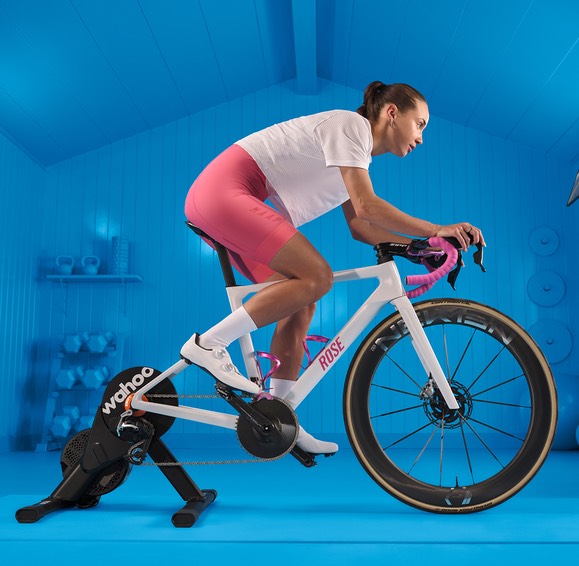
The cycling world is a constant whirlwind of activity. Every week brings news of a lighter component, a more aerodynamic frame, or a thrilling photo finish in a WorldTour race. This relentless focus on marginal gains and race results can make it seem like the sport's evolution is happening exclusively on the podium or in the R&D lab. But if you look closer, the most significant changes are often deeper, more subtle shifts happening behind the scenes.
These undercurrents in technology, industry economics, and culture are quietly reshaping what it means to be a cyclist and how the industry serves its riders. They don't always grab the headlines, but their impact is arguably more profound and lasting than any single product launch.
From the dissolving barrier between virtual and real-world riding to a surprising backlash against "perfect" race bikes, here are five of the most impactful and unexpected trends defining the future of cycling.
--------------------------------------------------------------------------------
1. The Wall Between Virtual and Real Riding Is Crumbling

For years, the debate has raged: is riding on a platform like Zwift "real cycling"? In 2025, that question is becoming irrelevant as the platform makes a decisive move to integrate the worlds of indoor and outdoor riding. In a major strategic shift, Zwift is breaking down the digital wall that separated its virtual world from a cyclist's real-world miles.
The Zwift Companion App will now ingest outdoor riding data directly from Garmin and Wahoo devices. This information isn't just for show; it will be used to calculate a new "Training Score" and "Training Status" for every user, providing a holistic view of their fitness based on all their riding, both indoors and out.
Crucially, this integration comes with in-game rewards. Paying Zwift members will now earn experience points (XP) for their outdoor rides at a rate of 5XP per kilometer. Even more importantly, those outdoor miles will count towards maintaining activity "streaks," a popular motivational tool within the app. This isn't just about blurring lines; it's a calculated business strategy to become the central hub for a cyclist's entire fitness identity. By capturing user data and engagement both indoors and out, Zwift increases its platform's stickiness, transforming from a pure indoor training tool into a comprehensive fitness ecosystem that recognizes and rewards every pedal stroke, no matter where it happens.
2. The Backlash Against "Perfect" Bikes Has Begun

While brands continue to push the boundaries of aerodynamic design, a powerful counter-trend is emerging that prioritizes different values: consumer-focused lightweight performance, durability, and a renewed appreciation for craftsmanship. The era of the "one aero bike to rule them all" is facing a significant challenge from a movement that values practicality and provenance.
- For Consumers, Not Pros: Brands are recognizing that most customers aren't bound by the UCI's 6.8kg weight limit. Scott made a bold statement with its ultra-light Addict RC, which weighs a startling 5.9kg in its flagship build. This signals a move away from the unified aero/lightweight bike, creating distinct options for pro racers and consumers who prioritize a featherlight feel on the climbs.
- A Search for Provenance: A growing number of riders are looking beyond mass-produced carbon, creating a resurgence for steel and metal frames. Brands like Standert and Mason are gaining a following by emphasizing European manufacturing, heritage, and the story behind their products. This shift reflects a desire for products with a clear sense of origin and belonging.
- A New Focus on Practicality: In a small but meaningful shift, major brands are paying attention to the details that matter to home mechanics. Canyon and Scott have begun using Torx 25 bolts on their new bikes, such as the Aeroad and Addict RC, because they are more durable and less likely to strip. A lead engineer at Canyon even joked that he was most proud of the bolts on the new Aeroad—a clear sign that user-friendliness is becoming a key design consideration.
This cultural shift is perhaps best summarized by Dom Mason, co-founder of a British bike brand:
"I feel as though people really want to know where things from. It’s unnerving with these huge corporations churning stuff out so quickly. It doesn’t give you any sense of belonging to anything. I do think there’s a bit of a switch..."
3. The Post-Pandemic Bike Boom Has a Painful Hangover

The cycling industry is currently navigating a significant market correction after the unprecedented demand of the pandemic years. This "hangover" is not a series of isolated incidents but a systemic shockwave felt across the entire sector. The news reveals a problem at every level: the Chapter 7 bankruptcy of Electric Bicycle Co. shows a once high-growth e-bike segment faltering; REI’s closure of its flagship SoHo store signals a retreat by a mainstream retail giant; layoffs at Pacific Cycle and the impending closure of KHS’s U.S. distribution business after 50 years of operation show foundational industry players contracting; and reports of floundering sales from the parent company of Osprey and Hydro Flask prove that even the high-margin accessory market is drying up.
Together, these events paint a clear picture of a challenging economic environment defined by consolidation and adjustment. This new financial reality may also be fueling the consumer trends toward longevity and practicality noted earlier, as riders increasingly value durability over marginal gains when budgets are tight.
4. Innovation's New Arena

This new focus on practicality and provenance isn't the only arena where the industry is maturing; the battle for technological supremacy has moved decisively from the race course into the courtroom. As the stakes for intellectual property and market access have grown, major brands are increasingly turning to legal challenges to protect their innovations and challenge regulatory overreach.
Two recent high-profile cases illustrate this trend:
- Brand vs. Brand: In a significant clash of tech giants, both Strava and Suunto have filed patent infringement lawsuits against Garmin. Strava's suit is particularly notable, as it concerns core features like segments and leaderboards, which have been central to the platform's success.
- Brand vs. Governing Body: Component manufacturer SRAM scored a provisional victory against the UCI, cycling's international governing body. SRAM took the UCI to the Belgian Competition Authority over a new gear-ratio rule that would have made some of its drivetrains illegal in competition.
This rise in litigation signals a new phase of market consolidation where legal strategy has become as critical as product innovation for defending market share. The right to own and implement new ideas is now a fiercely contested battleground.
5. The People Behind the Products Are Stepping into the Spotlight

A growing awareness of the human side of the cycling industry is prompting a new focus on everything from manufacturing ethics to user inclusivity. This shift shows the industry moving from a purely reactive stance on social issues to a more proactive one in identifying and serving its community.
This dynamic is visible in two key areas:
-
1. Fairer Manufacturing:
After U.S. Customs blocked imports from Giant over forced labor concerns, other companies began improving their supply chain ethics. Merida, for example, introduced a “zero-fee policy” to protect migrant workers, and the Taiwan Bicycle Association launched a new human rights program for local suppliers.2. More Inclusive Products:
This trend marks a significant maturation of the industry, reflecting a growing understanding that long-term success depends not just on the quality of the products, but on the well-being and inclusion of the people who make and ride them.
Brands are also thinking about riders who were often overlooked. Zwift, for instance, launched its “Baby on Board” workout collection — a series of low-intensity rides designed by Olympic champions Kristin Armstrong and Dani Rowe for pregnant cyclists. It’s a clear example of how the sport is becoming more welcoming to everyone.
--------------------------------------------------------------------------------
The evolution of cycling is clearly more than just a story of faster bikes and bigger races. The most profound changes are multifaceted, touching everything from how we train and what we value in our equipment to the legal battles shaping innovation and the ethical standards governing the industry. As these trends accelerate, it raises a crucial question for all of us who love the sport.
What will the cycling experience and the industry that supports it look like in another five years?




